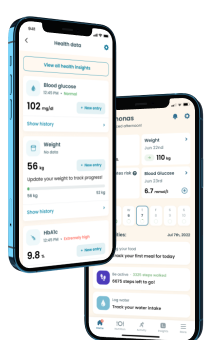Basal Insulin: Effectiveness, Types, Usage & Side Effects
One of the biggest obstacles many people struggle to overcome is diabetes control. Despite the series of orientations on why it’s extremely important to have blood sugar in check, people already caught in the web of blood sugar spikes barely gain much control.

One of the biggest obstacles many people struggle to overcome is diabetes control. Despite the series of orientations on why it’s extremely important to have blood sugar in check, people already caught in the web of blood sugar spikes barely gain much control.
The difficulty in achieving control after diagnosis is because normal living choices are unhealthy and encourage blood sugar rise. Generally, most foods are high in carbs and sugar, which is bad news for people who suffer from high blood sugar. Also, it’s not so easy to achieve exercise discipline instead of just resting. These two major poor health choices are why many people find it difficult to control their blood sugar.
However, people can better control their blood glucose levels with insulin therapy. The reason people have diabetes and severe hyperglycemia is because of a distortion in how much insulin their body creates. These distortions make it extremely difficult for people to enjoy insulin sensitivity and have their blood sugar levels under control. Using insulin, however, eliminates the issue of insulin resistance.
Basal insulin is the most popular therapy and comes in many forms and brands. Basal insulin is so popular and highly incorporative that you can find any form that suits your needs — intermediate-acting and long-acting insulin. They’re so named because of their response time following use.
This guide effectively considers how basal insulin works, the different basal insulin injections available, and how they effectively control blood sugar and weight gain.
What to Expect
- What is Basal Insulin?
- Types of Basal Insulin
- Basal Insulin Dosage Information and Guide
- Side Effects of Basal Insulin
- The Basal-Bolus Insulin Regimen
- The Insulin Pump
- Other Important Factors that Contribute to Diabetes Management
What Is Basal Insulin?
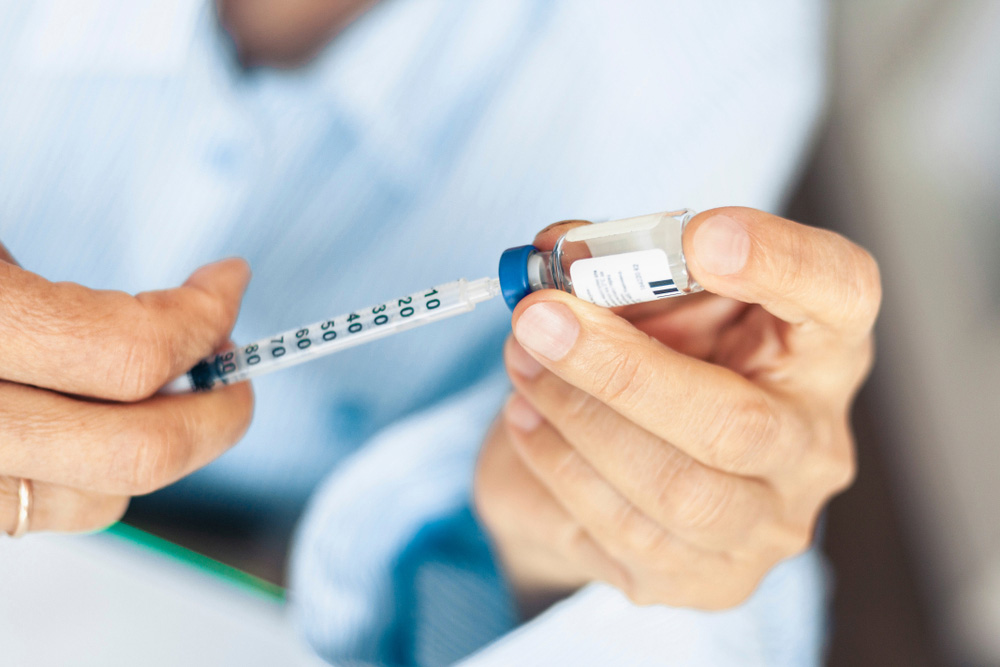
Basal insulin is one of the most popular insulins available to patients who have diabetes. It’s one major therapy that people who seek blood sugar control adopt. Basal insulin is designed to provide the body with insulin to keep their blood sugar level at the appropriate level.
The American Diabetes Association (ADA) defines basal insulin as background insulin because it fills the bloodstream with insulin that tackles blood sugar spikes during fasting and sleeping. This means it’s designed to stabilize blood glucose levels during inactiveness and before/after meals.
The basal insulin is quite unique as it’s mostly in times of fasting and inactiveness that blood sugar rises the highest. At night, during sleep, the liver releases glucose into the bloodstream continuously, which continues till the morning, causing the “dawn phenomenon.”
Consistent increase at night is extremely risky for people with diabetes. Thankfully, basal insulin controls the phenomenon, significantly reducing the risk of diabetes complications. Also, following meals, there’s a severe risk of blood sugar increasing more than it should. Again, basal insulin helps prevent such by ensuring adequate postprandial blood sugar level control.
Types of Basal Insulin
Depending on their characteristics and modes of action, all brands of basal insulin are categorized into one of the three categories. While there are different basal insulin types and brands, the major categorization is the one that comprises:
- Intermediate-acting basal insulin
- Long-acting basal insulin
- Ultra-long-acting basal insulin
We’ll comprehensively go through each one alongside examples in the following sections to help people know more about basal insulin’s usefulness.
Intermediate-Acting Insulin
This category describes injectable insulins injected into the body and lasts up to 1 hour. It’s at its strongest 4–8 hours after injection. Since these insulins’ effect doesn’t last the whole day, they are best injected into the body in the morning, just before meals, or in the evening after meals.
The two major brands of intermediate-acting insulin are:
Humulin N (NPH insulin)
Novolin N (NPH insulin)
Both do the same thing and are only different by brand names. Hence, we’ll only discuss Humulin N to outline exactly how intermediate-acting insulins are.
Humulin N
Humulin is an FDA-approved medication to help control blood sugar levels in children and adults with type 1 or type 2 diabetes. Humulin presents as a liquid suspension and is administered as an injection. It can be administered through a prefilled KwikPen or a multiple-dose vial.
This medication has no specific dosage; your insulin needs and blood sugar levels enable your doctor to determine your personalized dosage. However, there might be a need to adjust your dosage, and monitoring your blood sugar closely will determine any future adjustments.
Humulin N contains an active agent called insulin human isophane, a type of human-made insulin that’s slowly released into the blood system over time. It’s also termed neutral protamine Hagedorn insulin (NPH insulin). This form of insulin is manufactured with the help of recombinant DNA technology, where genetic properties are combined to produce insulin in humans.
The insulin human is a similar type of insulin created naturally by the pancreas. So, the body uses human insulin just like it does with natural insulin. This insulin works in the body by transferring glucose from the bloodstream to the cells, where they’re used for energy purposes.
Long-Acting Insulin
Long-acting basal insulins stay in the bloodstream for up to 24 hours. For some people, these categories of insulin may last for a little over 24 hours, while it could be less in others.
The good thing about this type of insulin is that its onset of action is pegged at 90 minutes following injection into the bloodstream. However, some people may have to wait for up to 4 hours before the effect kicks in. Also, unlike the intermediate-acting insulin with a peak time, these categories of insulin work at a steady, gradual rate.
There are four brands of long-acting insulin, and they include:
Levemir (Insulin detemir)
Lantus (Insulin glargine)
Toujeo (Insulin glargine)
Basaglar (Insulin glargine)
Again, all four insulins are long-acting and function the same way. We’ll only consider Levemir to highlight how long-acting insulin brands work.
Levemir
The injection presents in the following forms:
- A vial containing 10 ml of the drug mixture, with 100 units of insulin detemir per mL.
- A pre-filled pen known as the FlexTouch pen containing 3 mL of the drug mixture with 100 units of insulin detemir per mL.
Ultra-Long-Acting Insulin
The ultra-long-acting insulin is a special type of insulin designed in January 2016. It’s considered the longest background insulin category because it can last for up to 42 hours. There’s only one major brand in this insulin category — Tresiba.
We’ll briefly highlight how Tresiba works and what patients are to expect following its administration.
Tresiba
This is an FDA-approved medication to help control blood sugar levels in children 1 year and above and adults with type 1 or type 2 diabetes. Tresiba is a liquid solution taken as an injection under the skin once daily. The injection presents in the following forms:
- A 10 ml vial that contains 100 units of insulin per ml of the solution.
- A FlexTouch pen — a pre-filled disposable injection pen that comes in either 200 units of insulin for each ml of solution or 100 units of insulin for each solution.
This medication is artificial insulin manufactured in the laboratory and works like the body’s insulin. When Tresiba is given through the skin, it’s absorbed into the bloodstream, acting as a replacement for the natural insulin.
Tresiba contains a form of insulin known as insulin degludec. When injected through the skin, Tresiba steadily and slowly gets absorbed through the skin tissue into the bloodstream. A dose of Tresiba is effective for 42 hours, which helps manage blood sugar before meals, after, and overnight.
Additional Notes
The above are the major categorizations of basal insulins and how they work. Generally, you must talk to your doctor before choosing anyone to ensure safety. There are different types of treatment, and your activity rate and diabetes progress will determine the one that works best for you.
Basal Insulin Dosage Information and Guide
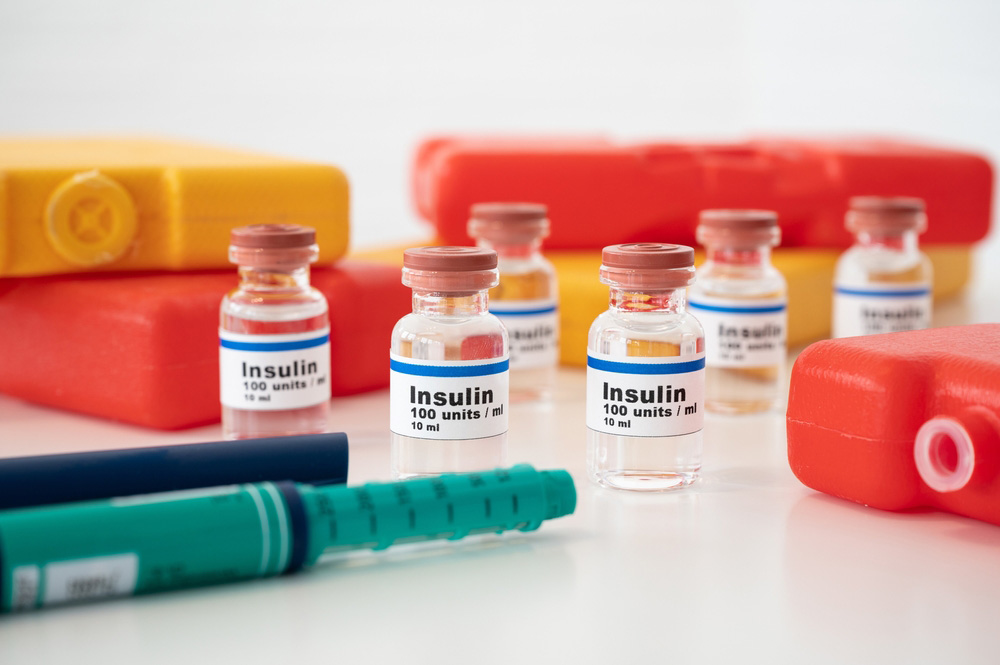
Basal Insulins have different dosage requirements because of how they work. Moreover, each insulin category has its pros and cons, so an endocrinologist is the best specialist to help you ascertain the right dose for each category. Discussed below are the general insulin dosage guide and information.
Take Intermediate Acting Insulin At Bedtimes (Humulin N and Novolin N)
Insulin for most people with diabetes is almost always available in the afternoon when they’re most needed. However, in the mornings, evenings and bedtimes, they’re not as available as they should be in healthy people. This is why the intermediate-acting insulins—Humulin N and Novolin N—are recommended just before or after meals in the morning and evening to allow for adequate blood sugar control before it worsens.
Taking Long-Acting and Ultra-Long-Acting Insulins
The Levemir, Lantus, Toujeo, Basaglar or insulin degludec (Tresiba) are all long-acting insulins. While the first four insulins are standard long-acting insulins that last for 24 hours on average, Tresiba is an ultra-long-acting insulin lasting close to 48 hours.
Taking any of these two insulins is quite straightforward. If you feel your blood sugar spikes aren’t yet advanced, these standard insulins are the best. However, if you know your spikes are severe such that the average long-acting insulin may not be enough to counter them, then ultra-long-acting insulin is the best option.
A doctor is in the best position to determine if your condition is severe or not and the type of treatment that you should go for, so never rule out the need for a doctor’s visit.



Side Effects of Basal Insulin
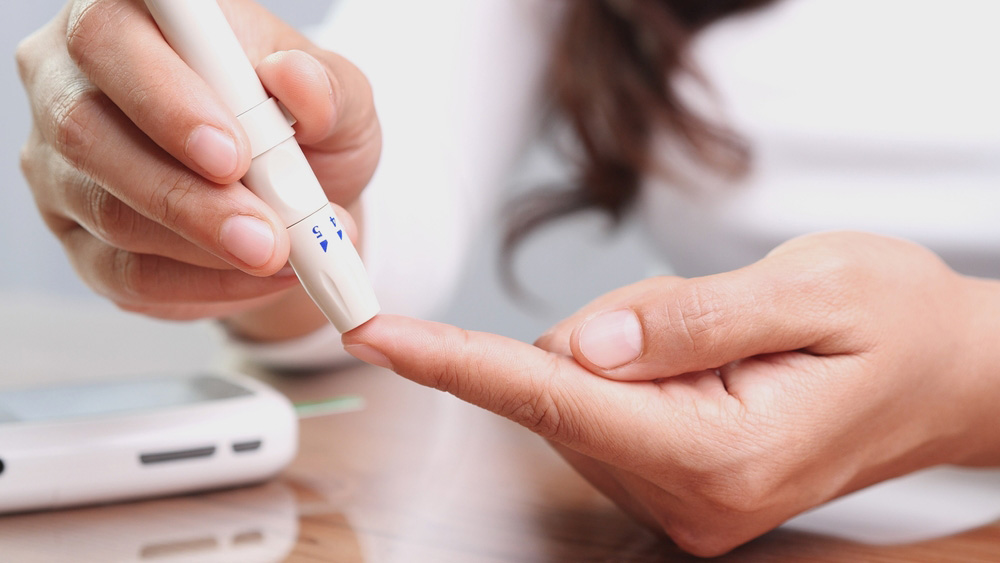
While basal insulin is excellent for maintaining blood sugar and reducing the risk of hyperglycemia, several side effects accompany the therapy, with the major one being low blood sugar (hypoglycemia). Some people may experience hypoglycemia in a situation when their insulin dosage becomes excessive following a decline in diabetes progression. This is extremely likely when patients implement other diabetes-friendly management tips.
Normally, it’s expected that health specialists periodically review patients’ insulin doses to avoid taking more insulin than needed. The sad reality is that some patients don’t share their progress with their doctor and end up having too many insulin doses, risking hypoglycemia in the process.
Basal insulin may also lead to certain allergies in people whose bodies don’t tolerate a particular brand. They could experience itching and sores, among other reactions. Additionally, there could be poor interaction between basal insulins and certain drugs, including beta-blockers, clonidine, lithium salts, and diuretics.
The Basal-Bolus Insulin Regimen

Bolus insulin is quite different from basal insulin. While basal insulin has three categories of insulin that work well for their respective purposes, bolus insulin is often the one experts opt for when they require a therapy with a faster onset of action.
Bolus insulin is called mealtime insulin because it’s strategic insulin taken during meals. They’re grouped as follows:
- Rapid-acting insulin
- Short-acting insulin
These two are somewhat similar but act a bit differently. The rapid-acting variants are designed to act immediately (as fast as 10 minutes following administration), contrary to short-acting insulin, which has an onset of action of at least half an hour. While both are simply designed to handle the after-effects of high blood sugar following meals, rapid-acting insulin has a shorter duration of action.
Bolus insulin can also be essential and provide relief where basal insulin falls short. Due to the steady, gradual release of insulin into the bloodstream when using basal therapy, controlling your blood sugar immediately after a meal may prove challenging. In such scenarios, bolus insulin would be the best option.
Drawing from the above realities surrounding the basal and bolus insulins, it’s clear that they can complement each other and help patients control their blood sugar much better. While the background insulin or basal insulin gives longer blood sugar control, bolus insulin ensures immediate control of blood sugar. To ensure the best of both worlds, experts lean towards a medical therapy termed the “Basal-Bolus regimen.”
Consulting your doctor is the first step to adopting the basal-bolus injection regimen, as the therapy requires patients to take multiple shots of injected insulin. Without an expert guide, there may be possible complications. A health expert will help patients know exactly when to take each of the injections to feel better and healthier without serious side effects.
The side effects of basal-bolus insulin therapy aren’t so different from what basal insulin presents.
The Insulin Pump
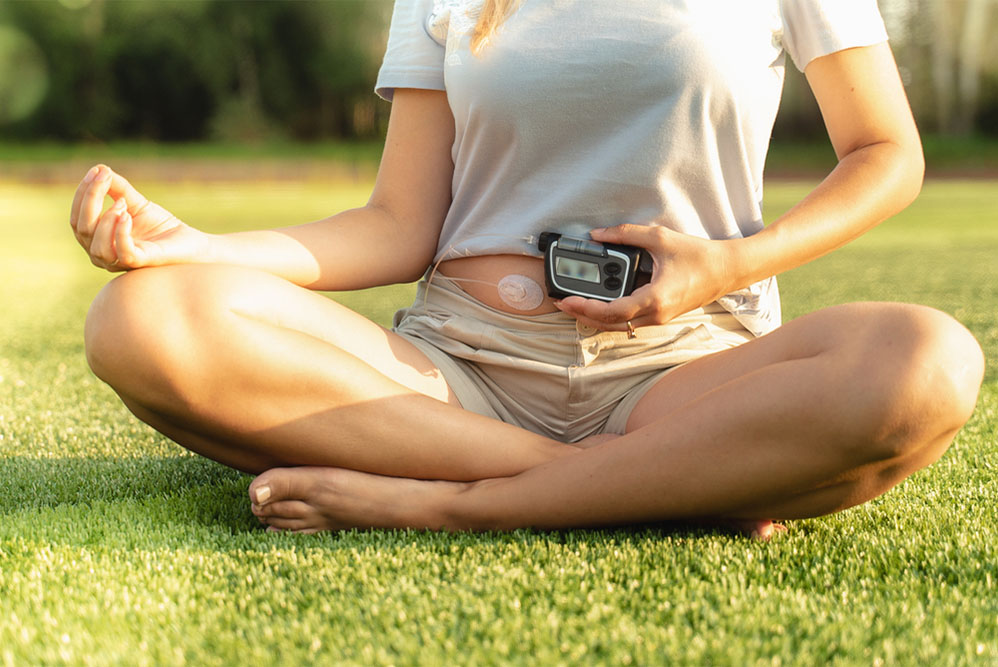
The insulin pump is a popular insulin device that’s great for administering insulin into the body. The pump is similar to a smartphone device and effectively delivers either basal insulin or bolus insulin.
The pump is an alternative to injectable insulins and is preferred by many people. A major advantage of the insulin pump is that it makes the flow of the insulin in the bloodstream close to natural, imitating how insulin release ensues in a normal healthy body.
The insulin pump, however, has several concerns. The first is the time it takes to fix an insulin pump into the body. The pump device needs to be set up, amongst other requirements.
The second is the possible mechanical issue that could arise when using an insulin pump. The slightest malfunction of an insulin pump can make people miss out on the right insulin amount that they actually need to function. For example, people with high blood sugar levels could have too much insulin and liver pressure that could cause diabetes ketoacidosis or have very small amounts and risk severe hyperglycemia.
If you use insulin, it’s critical to use it based on a doctor’s recommendation for the best results.
Other Important Factors that Contribute to Diabetes Management

Sticking needles into your body daily isn’t something one would want to deal with for extensive periods. Hence, there’s the need to opt for other means of managing blood sugar to reduce your dependence on injectable insulin in the long run. Here are the top recommendations:
Lose Weight
Losing weight lowers your risk for diabetes. A study of people who lost 7% of weight through diet and exercise reduced their diabetic risk by 60%. In essence, the more weight you lose, the slimmer your chances of developing diabetes.
The American Diabetes Association (ADA) recommends people with prediabetes lose about 7–10% of their weight to prevent the condition from progressing. You can start by using your current weight to create a weight loss goal. You could also book an appointment with your doctor to discuss your weight loss expectation and get a recommendation that will be best for you.
Stay Active
Inactivity increases your risk for type 2 diabetes. On the other hand, putting your muscles through work via exercise improves your body’s ability to absorb glucose and use insulin. This helps your cells that create insulin to be stress-free.
So, instead of sitting, try to exercise. You don’t necessarily have to get sweaty from a round of exercise to benefit from it. Black Women’s Health Study proves that engaging in brisk walking for more than 5 hours every week can help prevent the risk of diabetes.
Follow-up research by the Nurses’ Health Study and Health Professionals shows that you can reduce your risk of having type 2 diabetes by 30% if you engage in brisk walking for 30 minutes every day. Spending this amount of time on brisk walking comes with other benefits, and with more intense exercise, you’ll be doing your cardiovascular health a lot of good.
Watching television is one of the worst forms of inactivity — for every 2 hours spent watching television, you increase your risk for heart disease by 15% and your diabetes risk by 20%. The more you watch television, the more likely it is for you to become obsessed, establishing a link with diabetes. People also eat junk when watching television, which plays a vital role in increasing their risk for diabetes.
Moderate Alcohol Consumption
Research has linked the moderation of alcohol consumption to a lower risk of heart problems. This may also apply to type 2 diabetes. Namely, some studies prove you could reduce your risk for type 2 diabetes if you consume alcohol moderately.
Men should take two drinks daily at most, and women should aim for a daily maximum of one drink to ensure insulin efficiency doesn’t decline. Here, a drink refers to a 5-oz glass of wine, a 1.5-oz liquor shot, or a 12-oz beer.
On the flip side, taking excess alcohol increases the risk of diabetes. So, for people who drink alcohol, a moderate intake would be best for their health, while those who don’t take alcohol shouldn’t start taking it.
Stop Smoking
People who smoke heavily have a higher risk of developing diabetes than those who don’t, with the former recording an increased risk of 50%. Smoking has been linked to so many health problems, including diabetes.
More particularly, cigarette smokers have a 30–40% chance of having type 2 diabetes than non-smokers. In fact, smoking is one of the risk factors for type 2 diabetes. Namely, smoking causes problems with insulin, and nicotine increases blood sugar.
Change Your Diet
Dieting plays a major role in controlling diabetes and high blood sugar. It’s established that diabetes increases when the consumption of sugar is high. However, with proper dieting, people with the condition can conveniently and almost naturally reduce blood sugar, which is known to cause hyperglycemia and cardiovascular complications.
Dietitians generally recommend that patients take dietary changes seriously if they seek to decrease high blood sugar and reduce their dependence on oral and injectable medications like insulin.
The following tips can come in handy when planning your meals:
- Go for water, tea, or coffee instead of sugary drinks to ensure glycemic control
- Skip highly-processed carbohydrates or refined grains and go for whole grain products and whole-grain foods
- Limit your red meat and processed meat intake and choose fish, poultry products, beans, and nuts
- Choose healthy options of fats instead of saturated fats
While making significant dietary changes can play an essential role in reducing your diabetes risk, you may need expert help to get the best recommendations. There are several health resources that patients can trust to help them reduce their insulin dependency to live close to normal life; diabetes management meal apps are one of them.
Concluding Words & Summary
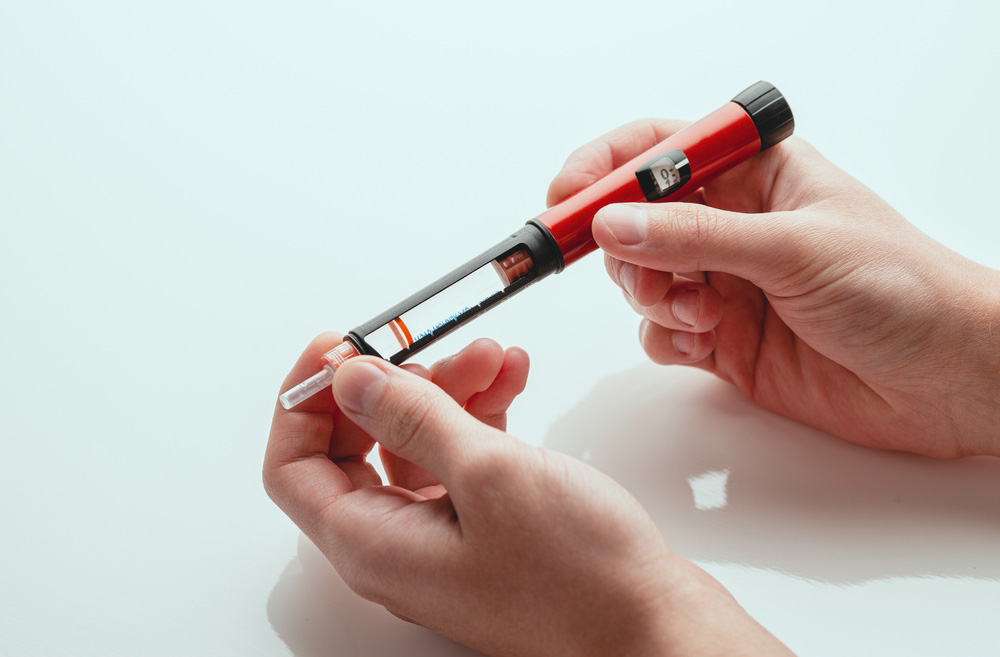
So far, we’ve successfully considered basal insulin therapy and effectively discussed how it works for patients with high blood sugar. This guide highlights different types of insulin to enable people with diabetes to determine what best fits their needs.
At a glance, long-acting insulin seems to be the most desirable as it generally means fewer injections. However, some people may be active throughout the whole day and burn lots of sugar naturally. Administering long-acting basal insulin in such individuals may translate into a higher risk of low blood sugar, which equally has its consequences.
Due to the possible risk that long-acting diabetes can cause patients, health experts often recommend mealtime insulin categorized as short-acting or rapid-acting insulin. As already stated in this guide, mealtime insulins help patients control their blood sugar after a meal.
Generally, mealtime insulin does more than just control blood sugar after a meal. Many people with diabetes who take mealtime insulin get to know the best food to eat to reduce their dependence on the treatment. This realization has helped many people put serious effort into finding the best food to eat.
There are many ways to go about this; some meet a dietitian to help determine the best foods to eat, while some others opt for diabetes management meal apps. The good thing about the latter is that they offer regular updates of the latest diabetes-friendly meals to help people with diabetes make the best food choices.
Our Klinio app, for example, is a highly effective diabetes-focused meal app that helps people with the condition to eat the best meal. The app helps them create a healthy meal routine that controls their blood sugar, reducing their dependency on injectable and oral medications.
Take a quiz and get your diabetes-management plan today!






